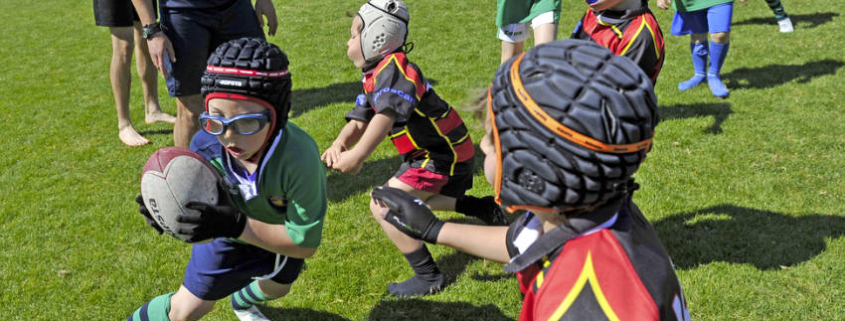Scrum Posture for Children
“The scrum and the tackle are the two really contentious areas of the game. If you get those two aspects right, most rugby matches will work in your favour.” Alan Lewis – Rugby union referee
Safety in the scrum is of absolute importance in the game due to the potential for neck and lower back spinal stress. Spinal dysfunction, associated nerve irritation and poor posture impact on muscular function, key for strength, speed, flexibility, coordination and agility all of which are important for a player to perform at their best and to avoid injury. Scrums require technique and are about the individual getting themselves in the right position and not just size. In the scrum, good posture is vital.Every individual must maintain a good body position that keeps their spine in the best possible position to tolerate compressive loads and better transmit force. The spine must remain in a neutral position whilst retaining natural spinal curves but avoid being flexed or rounded. A rounded spinal position not only reduces the transfer of force through the scrum, but also compromises the health of the spine and risks injury. Equally the spine should not be forced and loaded into extension as this is never a healthy position for the spine.
Aches and pains in the back should not dismissed as just part of the game in rugby or any other sport as this may lead to chronic issues, especially if untreated. Because of growth, young sports persons are susceptible to injury, particularly during the growth spurt of adolescence. Back pain is often misunderstood and no one should just ‘grin and bear it’ by just taking medication.
By getting children scrummaging correctly with good posture they are more likely do so throughout their growth and development. If children are not educated about dynamic posture in the scrum combined with good posture in the classroom, injuries in rugby are more likely to occur. Good posture should better enable your child to hold a strong and straight position and hold their own in the scrum.
Players should to be able to demonstrate the postural strength required to maintain a neutral spine while in a scrum position before being allowed to progress into fully opposed scrummaging. To introduce this skill safely scrum gradually with individual on individual whilst on the knees. This basic scrum posture should be maintained by every player in the scrum. Head in neutral position keeping your neck aligned with the back, looking up through your eyebrows. Shoulder blades back, pull your arms in close at either side of your chest so that the muscles in your back tense. Chest pushed out like a Gorilla – and maintain posture. Hips tilted (bum pointing out/up) while creating a natural concave curve in your lower back. Knees slightly bent. Feet shoulder-width apart. Due to the stress that playing rugby has on a spine it makes common sense that rugby players of every age are checked by an osteopath for spinal dysfunction/mobility and posture especially kids with growing and developing spines.
Osteopathic treatment and advice helps promote spinal health, encouraging bio-mechanically efficient posture and allowing the musculoskeletal,nervous and circulatory systems to recover faster from injury. In addition to this, osteopathic principles, medical and bio-mechanical knowledge may help to encourage optimal recovery fro injury, reduce the risk of injury and improve performance. This is achieved through osteopathic hands on treatment (subtle joint release, massage, stretching, myofascial release), realistic postural and bio-mechanically orientated exercise advise.
View a list of common complains that Osteopathy can assist with
Discovery the benefits of Osteopathy
- What is Osteopathy?
- Adult health issues
- Babies and Children
- During and after pregnancy
- Common Complaints
- Testimonials
- Sports Injuries
- Genral Osteopathy FAQs
- The Science & Reasearch



